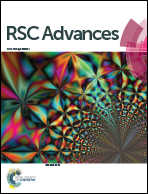Effects of non-catalytic surface reactions on the CH4–air premixed flame within micro-channels
Abstract
The non-catalytic surface of a micro-combustor plays a significant role in flame propagation. For the purpose of investigating the effects of surface reactions on the combustion process, this paper presents a numerical 2D simulation of a CH4–air premixed flame within a micro planar channel with detailed gas-phase and non-catalytic surface reaction mechanisms. In this paper, we focus on numerically examining the effects of surface reactions on the flame structure. The simulation results show that surface reactions affect the temperature distribution in three controlling regimes, distinguished according to the inlet velocity. Besides, radicals suffer sharper declines near the active surface than those near the inert surface due to the radical removing effect. Moreover, as the temperature increases, the difference will become more remarkable especially in the vicinity of the wall. Among the radicals, the mass fractions of H, O, and OH & CH3 near the surface experience the largest, mediate and smallest decay, respectively, when changing the inert surface to the active surface. The adsorption of H should be of the greatest concern. The OH radical has a similar distribution profile to the O radical for both kinds of surfaces.


 Please wait while we load your content...
Please wait while we load your content...